Wallasea Island flooded to help Essex wildlife
- Published
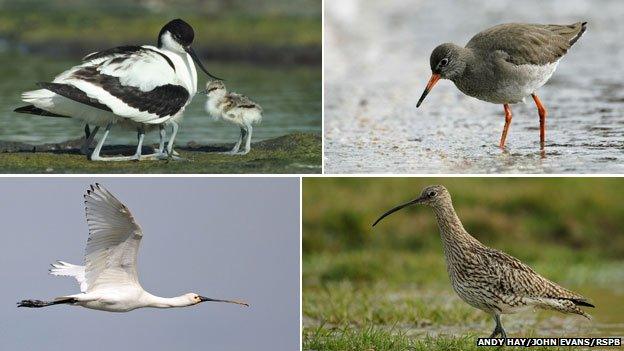
(Clockwise from top left) avocets, redshanks, curlews and spoonbills all live on saltmarsh habitats
Sea defences on an island off the Essex coast have been deliberately breached to create new habitat for wildlife.
It is the latest phase of the Wallasea Island Wild Coast project, which aims to create salt marsh on 1,655 acres (670 hectares) of former farm land.
The RSPB is behind the project, which has been supported by Crossrail providing soil dug from its tunnels in London.
The aim is to attract wading birds, seals and plants such as samphire.

The island's eastern tip was agricultural land when this photo was taken in 2012
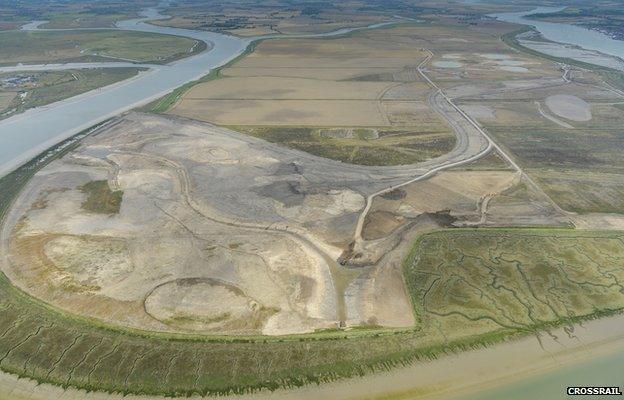
This photo from 2014 shows how farmland was cleared to begin building lagoons
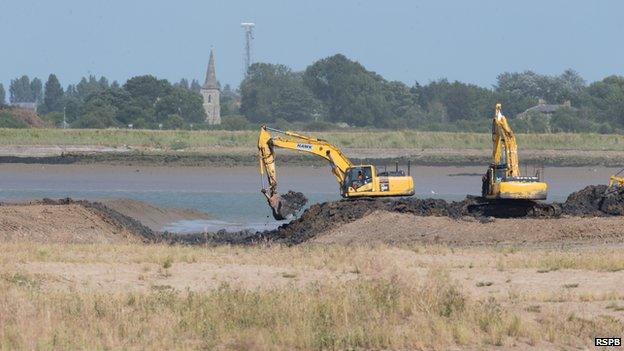
The existing sea defences were breached by digger to allow sea water to flood part of the island
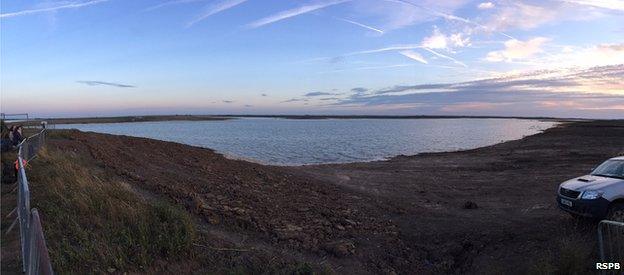
The sea water flooded in to the new lagoon, where salt marsh vegetation should now grow
The island - between the River Crouch and River Roach near Southend - was marshland until it was drained and protected by sea walls for agricultural use about 400 years ago, said the bird charity.
'International importance'
About 8,000 tonnes of spoil has been shipped from the Crossrail project in London and unloaded using specially-built conveyor belts.
Parts of the island below sea level have been built up to create shallow lagoons similar to other RSPB reserves, such as Minsmere in Suffolk.
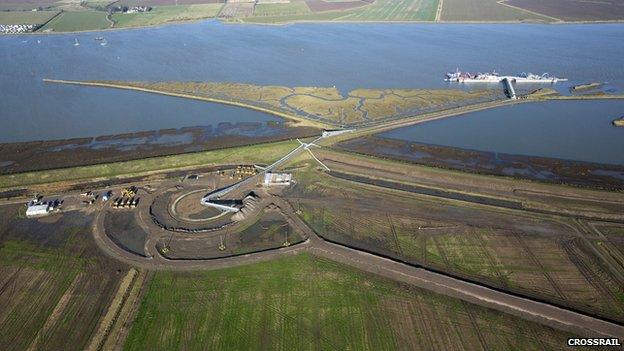
Earth from Crossrail's tunnels in central London was delivered by boat to the northern coast of Wallasea Island
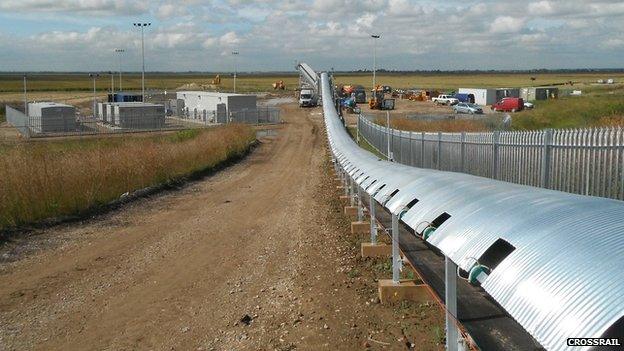
The earth was moved onto the island by a specially-built conveyor belt

The RSPB's plan is to turn 1,655 acres (670 hectares) of the island into marshland
Martin Harper, RSPB conservation director, said: "The partnership is allowing the completion of a major transport project which will boost the economy, while providing an area that will become an area of international importance for wildlife.
"At a time when nature is in crisis, we believe Wallasea sets a new benchmark showing what's possible with smart regulation and intelligent partnerships between the private sector and charities."
Andrew Wolstenholme, Crossrail's chief executive, said: "This major new wetland will be a lasting environmental legacy of the Crossrail project for generations to come, as well as supporting economic growth and jobs through an increase in tourism to the area."
The RSPB described the breaching of the sea wall as a "significant milestone" and nature will now take its course as the newly-flooded land becomes vegetated.
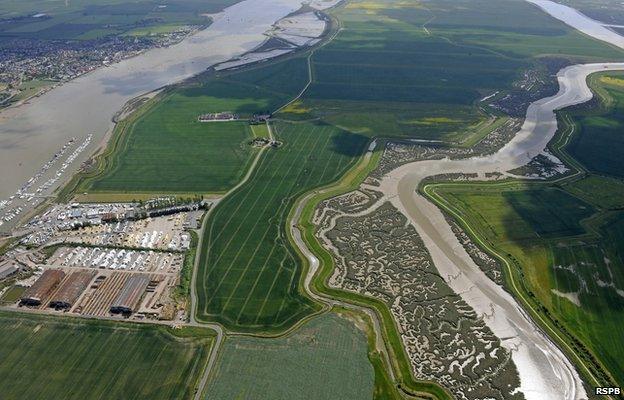
The project began on the north coast of the island (top and centre) when sea walls were breached in 2006